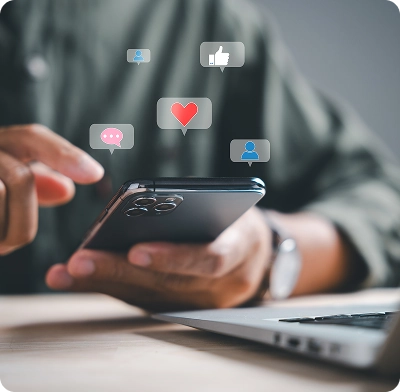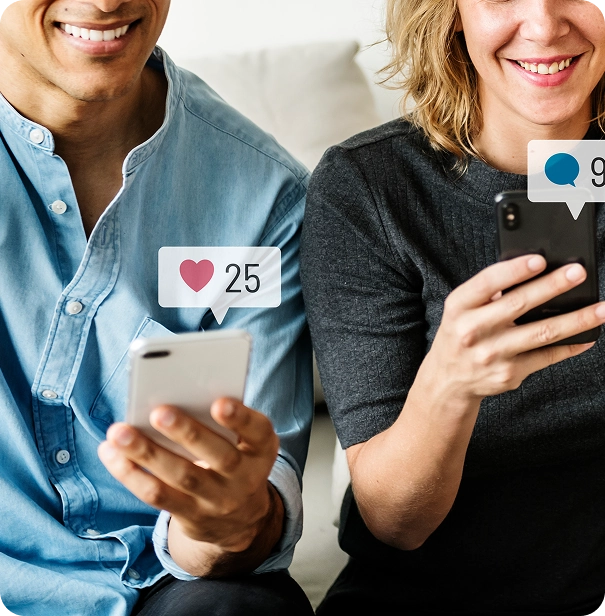What Is Influencer Marketing? Definition and Key Concepts
Influencer marketing is a modern communication strategy that brands use to engage audiences through trusted personalities on Social Media. In today’s hyper-connected world, traditional television ads and mainstream commercial campaigns are losing their impact, especially among younger generations. Brands are increasingly turning to influencers to promote their products and services in a way that feels personal, authentic, and relatable.

Definition of Influencer Marketing
Influencer marketing is a strategic approach where a brand collaborates with social media opinion leaders to endorse or promote its products or services. With over 4.2 billion users across various social networks, companies have pivoted from conventional channels like television and print media toward digital-first strategies, leveraging platforms such as Instagram, TikTok, and Twitch.
Brands seek to deliver a personalized and credible message by partnering with influencers whose followers trust their opinions. For influencers, these partnerships represent significant revenue opportunities. Their earnings vary based on the size and engagement level of their audience. By 2025, the influencer marketing industry is expected to generate around €28 billion globally.
Why Invest in Influencer Marketing?
Nearly 49% of consumers report trusting influencer recommendations on social media more than traditional advertisements. Influencer marketing offers multiple advantages:

Increased Visibility and Engagement:
Influencers, whether with thousands or millions of followers, help brands achieve broader communication reach. Their content generates substantial interaction through likes, shares, and comments, boosting brand exposure organically.
Reaching Younger Generations:
Generations Y and Z are moving away from traditional media, favoring social platforms for entertainment and shopping. Influencer marketing allows brands to engage these demographics where they spend the most time.
Creating Quality
Content:
Web influencers are experts in content creation,photos, videos, live streams, and articles that resonate with audiences. High-quality influencer content often includes links that strengthen a brand’s SEO performance by driving traffic and improving search engine rankings.
Better Return on
Investment:
Compared to traditional media campaigns, influencer marketing is significantly more cost-effective. Studies show it delivers up to 11 times higher ROI. Some brands also negotiate product-based collaborations instead of monetary payments, providing free products to influencers in exchange for exposure.

How to Launch an Influencer Marketing Campaign
Over the years, influencer marketing has become a sophisticated field, complete with specialized agencies and platforms connecting brands and influencers.
What Is an Influencer Campaign?
An influencer campaign is a marketing initiative designed to boost brand awareness and drive engagement through partnerships with one or more influencers. Successful campaigns generally follow these stages:
- Developing a detailed campaign brief
- Identifying and recruiting suitable influencers
- Sending products or services for endorsement
- Managing communications and postings
- Analyzing results and calculating ROI
Working with Influencer Marketing Agencies
Agencies specializing in influencer marketing guide brands through each step, from strategy development to campaign execution and performance analysis. They understand platform dynamics, influencer behavior, and optimal ways to align brand identity with suitable online personalities.
Influencer Marketing Platforms
Influencer platforms act like digital marketplaces where brands or agencies can post campaigns and influencers can apply to participate. Platforms like Linkage streamline operations by providing access to databases of verified influencers, campaign management tools, automatic reporting, and ROI tracking.
Platforms save brands valuable time and resources, offering transparency on influencer reach, engagement, and even flagging fake followers.

Understanding Different Types of Influencers
Influencers vary by the size of their audience and the nature of their engagement:

Nano-Influencers:
With fewer than 10,000 followers, nano-influencers typically achieve higher engagement rates and operate in niche markets. They prioritize community over scale, offering affordable, high-trust endorsements.
Micro-Influencers:
Holding between 10,000 and 100,000 followers, micro-influencers maintain strong bonds with their audiences. They provide better-targeted exposure and engagement than larger influencers.
Macro-Influencers:
With 100,000 to 500,000 followers or more, macro-influencers offer extensive visibility across different sectors. They are often represented by agencies and command higher fees.
Mega-Influencers and Celebrities:
Public figures in entertainment and sports are powerful but expensive partners. Their massive follower bases make them ideal for large-scale brand visibility campaigns.

Brand Ambassadors
Unlike influencers who typically promote short-term campaigns, brand ambassadors maintain long-term relationships with brands. They embody the company’s values and act as ongoing representatives, sometimes without direct financial compensation.
Social Networks for Influencer Marketing
Choosing the right platform is critical for success. Different networks serve different audiences and content formats:
YouTube
Long considered a video-only platform, YouTube has evolved into a major social network with massive influence. Popular YouTubers can have millions of subscribers, providing immense visibility for brands. With billions of daily views, YouTube offers significant opportunities for brands to connect with young audiences through influencer partnerships.
With over 2 billion users worldwide, Facebook remains a cornerstone platform for brands targeting diverse age groups. Although its engagement rates have declined compared to newer platforms, Facebook’s group communities and live-streaming features still provide rich marketing opportunities.
Instagram is at the heart of influencer marketing. With high engagement rates and global reach, it supports product placements, live shopping events, and contests easily. Instagram’s features such as Stories, Reels, and Shopping make it ideal for dynamic and interactive brand promotions.

Snapchat
Snapchat caters primarily to younger audiences, offering intimate and authentic communication through ephemeral messaging. Influencers on Snapchat build tight-knit communities, creating strong trust and impactful marketing possibilities.
TikTok
TikTok has quickly become one of the most powerful social media platforms. Its short-form, music-driven videos appeal especially to Gen Z. Viral challenges and creative trends make TikTok a prime environment for innovative marketing strategies and influencer collaborations.
Techniques Used in Influencer Marketing
Brands employ several key techniques to enhance their influencer marketing strategies:
Unboxing:
Influencers record themselves opening new products, sharing first impressions, and engaging audiences with exclusive product reveals.
Sponsored Content:
Brands collaborate with influencers to create paid posts or articles. Well-executed sponsored content, particularly when aligned with strong Affiliate Marketing strategies, can go viral and provide excellent brand exposure.
Product Placement:
Common in YouTube videos and Instagram posts, product placement integrates brand mentions naturally within content.
Travel Vlogs:
Travel-focused influencers share branded experiences while exploring new destinations, offering authentic and aspirational content to their audiences.
The Future of Influencer Marketing
Influencer marketing continues to evolve rapidly. While it solves many challenges of traditional advertising, such as ad blindness and low trust, it also faces new hurdles like fake followers and demands for greater transparency.
Authorities such as the Federal Trade Commission (FTC) require influencers to disclose paid promotions using hashtags like #ad or #sponsored. Brands increasingly prefer partnerships with micro-influencers, whose smaller but more engaged audiences offer a better price-to-result ratio.
As visuals continue to outperform written content, platforms like Instagram will remain dominant for influencer marketing. Compliance, authenticity, and deeper audience relationships will shape the next era of brand-influencer collaborations.
Influencer marketing now represents one of the strongest growth opportunities in digital marketing, offering authentic engagement, measurable ROI, and a highly personalized connection with target audiences.
